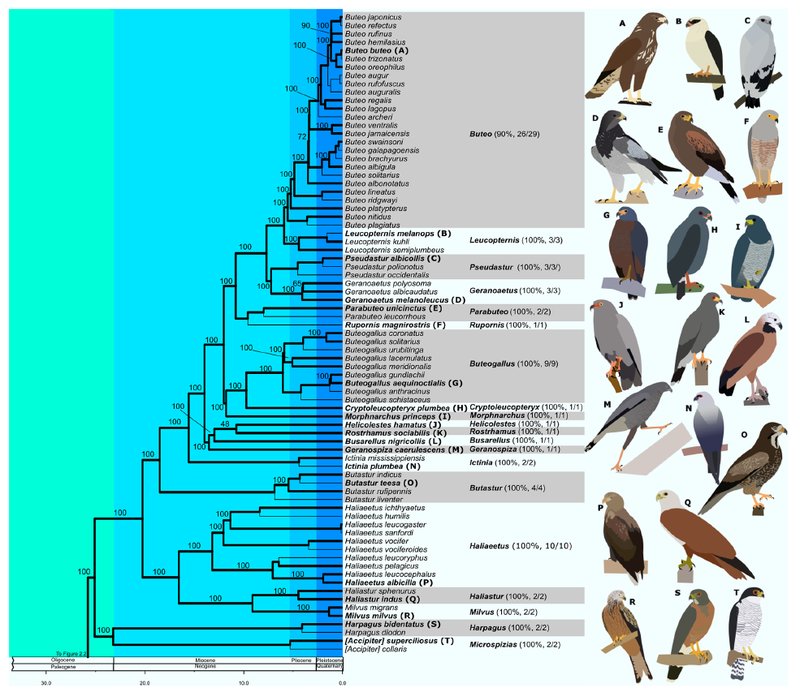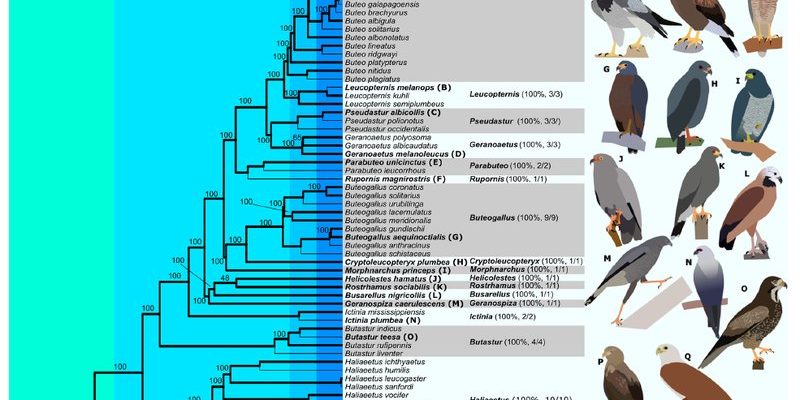
Hawks belong to a larger family of birds called Accipitridae, which also includes eagles, kites, and vultures. Their evolutionary journey is intriguing. It reveals how these birds adapted to various environments and how they’ve become the skilled hunters we see today. So, let’s delve into the fascinating history of hawks—trust me, it’s more than just feathers and flight.
Origins of Hawks: A Glimpse into the Past
The history of hawks can be traced back millions of years. Birds are believed to have evolved from theropod dinosaurs during the late Jurassic period. The ancestors of modern hawks likely emerged during the Eocene epoch, around 56 to 33 million years ago. By then, the Earth was undergoing significant changes, including the rise of forests and open landscapes, which set the stage for these birds to thrive.
Hawks adapted to these environments with remarkable agility and sharp talons, enabling them to hunt efficiently. Imagine how they swooped down from trees to catch unsuspecting prey. This was the beginning of their evolution into the skilled hunters we recognize today. Over time, different species of hawks emerged, each adapting to its unique surroundings.
What’s fascinating is that hawks were not the only birds adapting to these changes. The evolution of various other bird species occurred simultaneously, leading to rich biodiversity. The diversity we see in hawks today reflects this long history of adaptation to changing environments.
Physical Characteristics that Spell Success
Hawks are renowned for their physical traits that make them exceptional hunters. One of their most striking features is their keen eyesight. Hawks can spot prey from great distances, thanks to their large eyes and specialized cells. The ability to see ultraviolet light is another advantage; it helps them detect urine trails of small mammals.
Their body structure is also engineered for hunting. With strong wings and powerful talons, hawks can capture and hold onto their prey effectively. The sharp, hooked beak allows them to tear through flesh with ease. Honestly, these adaptations are like nature’s perfect toolkit for survival.
You might be wondering how these traits evolved over time. Well, the birds that were better suited to their environments—those with sharper vision or stronger talons—were more likely to survive and reproduce. This process of natural selection explains how different species of hawks developed unique features suited to their habitats.
Hawks in Culture: From Myths to Modern Symbolism
Hawks have played a significant role in human culture throughout history. In many ancient civilizations, these birds were seen as symbols of power and divinity. For instance, in Ancient Egypt, the hawk was associated with the sun god Horus, representing kingship and the sky.
Even in modern times, hawks symbolize freedom and strength. Many sports teams use hawks as mascots, representing determination and agility. The imagery of hawks can be found in art, literature, and even in the names of various organizations. Their majestic flight inspires us, reminding us of our connection to nature.
But it’s not just symbolism; hawks have also been vital in falconry, a practice dating back to ancient times where humans trained these birds for hunting. This relationship between hawks and humans showcases a mutual respect and understanding that has evolved over centuries.
Ecological Importance of Hawks
Hawks play a crucial role in ecosystems as top predators. By hunting smaller mammals, birds, and insects, they help maintain balance in nature. Without these predators, prey populations could explode and lead to overgrazing, affecting the habitats of numerous other species.
Moreover, hawks also help control pests. For instance, by preying on rodents, they reduce the likelihood of crop damage and disease transmission. This ecological benefit is often overlooked, but it highlights how interconnected our environment is. Protecting hawks means protecting the intricate web of life they help support.
Additionally, hawks are indicators of environmental health. If hawk populations begin to decline, it may signal issues in the ecosystem, such as habitat loss or pollution. By monitoring their numbers, scientists can gain insights into the health of various habitats, making hawks important allies in conservation.
The Diversity of Hawk Species
When we talk about hawks, we should recognize the incredible diversity within this group. There are about 200 species of hawks worldwide, each uniquely adapted to its environment. The Red-tailed Hawk, for example, is common across North America. It’s easily recognized by its distinctive red tail and is known for its powerful scream.
In contrast, the Cooper’s Hawk has a more agile body, allowing it to navigate through dense forests. This species prefers hunting smaller birds, showcasing how different hawks fill various niches in their ecosystems. Honestly, it’s like a team of superheroes, each equipped with skills tailored to tackle their specific challenges.
Additionally, the Harris’s Hawk is notable for its social behavior. Unlike most hawks, these birds hunt in groups, demonstrating teamwork that sets them apart. This incredible diversity highlights how adaptive and versatile hawks are throughout different environments.
Threats to Hawk Populations and Conservation Efforts
Despite their remarkable adaptations and ecological importance, hawks face numerous threats today. Habitat destruction due to urban development and agriculture significantly reduces their living spaces. Additionally, pesticide use can poison these birds, leading to population declines.
Conservation efforts are crucial for protecting hawks. Organizations work hard to preserve their habitats and promote awareness about their ecological roles. Educating the public about the importance of hawks helps in fostering a supportive environment for these birds to thrive.
You might also hear about various rehabilitation centers that focus on injured hawks. They work to nurse these majestic creatures back to health, allowing them to return to the wild. By participating in these efforts, we can all play a part in safeguarding these incredible birds for future generations.
The Future of Hawks: What Lies Ahead?
Looking ahead, the future of hawks is intertwined with our actions today. As climate change continues to affect habitats, hawks will need to adapt even further. Fortunately, many conservation initiatives are in place, fostering a better understanding of these birds and their needs.
Public engagement is also essential. Organizations and wildlife enthusiasts work together to advocate for hawk protection, ensuring their voices are heard. Whether it’s through community events, educational programs, or citizen science projects, everyone can contribute to the well-being of hawks.
Ultimately, the evolution and history of hawks remind us of how interconnected we are with nature. Taking steps to protect these birds not only benefits them but also enriches our own lives. As we appreciate hawks soaring above us, let’s commit to safeguarding their future.
In conclusion, the evolution and history of hawks reveal a story of adaptation, resilience, and beauty. These incredible birds have not only shaped ecosystems but also captured our imaginations throughout time. By understanding their past, we can ensure that they continue to thrive in our skies, inspiring wonder for generations to come.

